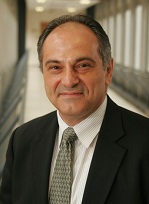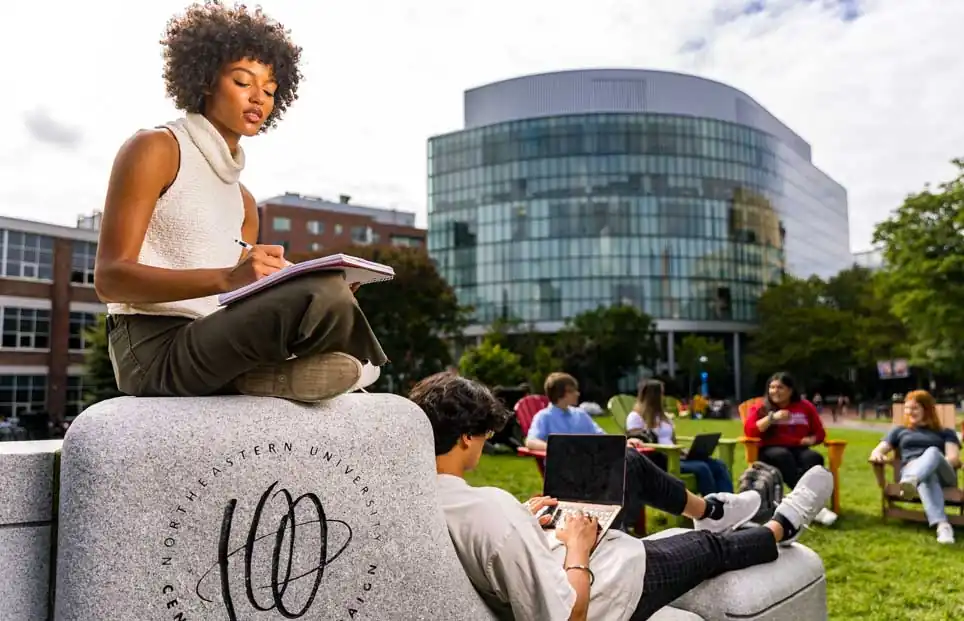Specializations
Molecular basis of Ion Channel and G Protein-Coupled Receptor (GPCR) function
Mechanisms of action of small molecule ligands on Ion Channels and GPCRs
Research
My graduate training introduced me to the complex but fascinating world of molecular mechanisms of regulation of protein function. In 1983, two years after the patch-clamp technique was reported, I joined David Clapham’s lab at Harvard Medical School (HMS) and worked for my PhD thesis on the mechanism by which the Gbg subunits of G proteins stimulate K+ channel activity in the heart. In my postdoctoral work still at HMS, I trained with the late Peter Hess and studied regulation of N-type Ca2+ channels by G proteins. In Bernardo Nadal-Ginard’s lab I learned molecular biology and studied voltage-sensing mechanisms of K+ channels. While an Instructor, in my own lab at HMS, we monitored non-invasively the electrical activity of dissociated neurons from the suprachiasmatic nucleus showing circadian activity patterns, an area I had been introduced to in my Master’s studies at Northeastern University with Michael Terman.
In 1993 under the chairmanship of Harel Weinstein, I started my own lab in Manhattan at the Mount Sinai School of Medicine (MSSM) Physiology and Biophysics. I returned to the study of G protein regulation of K+ channel activity, studying structure and function relationships. Important contributions were made in this area in the next decade and beyond, as we are still actively engaged in trying to decipher the molecular workings of macromolecular complexes of receptors, G proteins and K channels. Yet, an important paper five years into my career at MSSM stimulated us to focus our work on the dependence of G protein activation of K+ channels on phosphoinositides and PIP2 in particular. PIP2 has turned out to be a key regulator of the activity of most ion channels and my lab is enjoying 22 years of continuous funding from the NIH for studies on the regulation of ion channel activity by PIP2. We are currently on the 19th year of our funded studies aiming to understand at a molecular level post-translational modifications of activity of K channels via PIP2.
Since 2008, when I took the position of Professor and Chair of Physiology and Biophysics at Virginia Commonwealth University School (VCU) of Medicine, I decided to pursue a third line of research in my lab. Using PIP2 and G protein-dependent ion channels expressed in Xenopus oocytes, we studied a heteromeric GPCR involved in schizophrenia and obtained surprising results. The oocyte system and our assay proved to provide a powerful means to figure out empirically the ratio of the two receptors that yielded the most efficient cross signaling. With a clear assay, we managed to decipher the mechanism by which antipsychotic drugs worked through this heteromeric complex and tested the predictions of our model in native tissues and behavioral paradigms. We continue to very actively study the signaling of several heteromeric GPCR complexes involved in some of the most devastating human diseases.
In July of 2016, I decided to make a full circle and return to my alma matter Northeastern University (NEU), where I was first initiated in research, as the Professor and Chair of Pharmaceutical Sciences in the School of Pharmacy. I see a great opportunity in bringing together Medicinal Chemistry, Drug Delivery, Pharmacology/Physiology, and Structural Biology with the aim to form a solid foundation of pre-clinical studies on the action of pharmaceuticals and naturally occurring substances. NEU’s lead in cooperative education and Boston’s lead in the biotech sector offer exciting opportunities for developing strong relationships between academia and industry that could facilitate the process from discovery to application. With an emphasis on targeting membrane proteins I aspire not only to continue my three lines of research interests but also to stimulate a unique environment through Pharmaceutical Sciences, where significant advances toward solving important health challenges can be achieved.
Publications
(posted August 2016)
Logothetis DE, Kurachi Y, Galper J, Neer EJ, and Clapham DE. The bg subunits of GTP-binding proteins activate the muscarinic K+ channel in heart. Nature 1987; 325:321-326 (cited GS: 1044 WOS: 908 times). Impact Factor: 38.14 [Graduate Student – HMS]
Plummer MR, Logothetis DE, and Hess P. Elementary Properties and Pharmacological Sensitivities of Calcium Channels in Mammalian Peripheral Neurons. Neuron 1989; 4:1453-1463 (cited GS: 630 WOS: 654 times). Impact Factor: 15.05 [Postdoc – HMS]
Welsh DK, Logothetis DE, Meister M, and Reppert SM. Individual neurons dissociated from rat suprachiasmatic nucleus express independently phased circadian firing rhythms. Neuron 1995;14:697-706 (cited GS: 1171 WOS: 858 times). Impact Factor: 15.05 [Instructor – HMS]
Lopes CMB, Zhang H, Rohacs T, Yang J, and Logothetis DE. Alterations in Conserved Interactions between PIP2 and Kir Channels Underlie Channelopathies. Neuron 2002, 34:933-944 (cited GS: 315 WOS: 234 times). Impact Factor: 15.05 [Assistant Professor – MSSM]
Rohács T, Lopes CMB, Michailidis I and Logothetis DE. PtdIns(4,5)P2 regulates the activation and desensitization of TRPM8 channels through the TRP domain. Nature Neurosci. 2005, 8:626-634 (cited GS: 424 WOS: 312 times). Impact Factor: 16.72 [Professor – MSSM]
Fribourg M, Moreno JL, Terrell Holloway T, Provasi D, Mahajan R, Park G, Lia Baki L, Adney SK, Hatcher C, Ruta JD, Albizu L, Li Z, Shim J, Fabiato A, MacKerell AD, Brezina V, Sealfon SC, Filizola M, González-Maeso J and Logothetis DE Decoding the signalling of a GPCR heteromeric complex reveals the mechanism of action of antipsychotic drugs. 2011 Cell 147:1011-23 (cited GS: 119 WOS: 89 times). Impact Factor: 28.71 [Professor – VCU]

